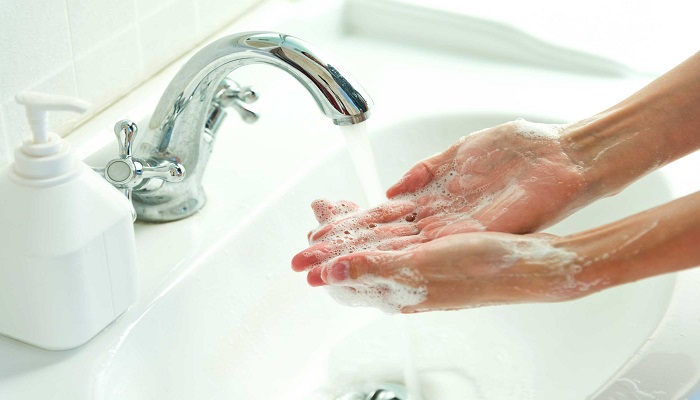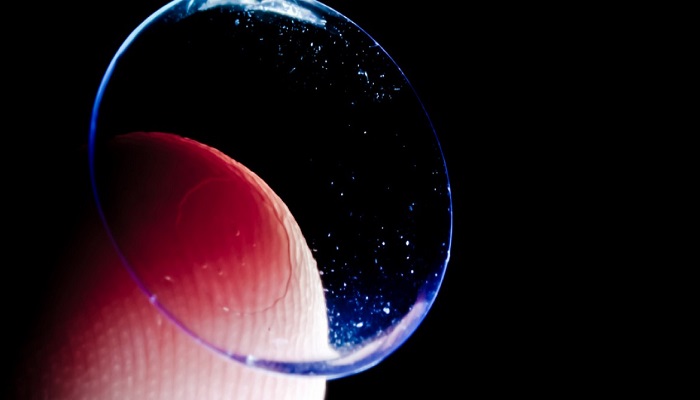These are the most frequent faults in the placement of contact lenses and some tips and instructions to avoid them. Because eye health comes first.
Although wearing contact lenses is a very comfortable option for those with myopia, astigmatism and other eye conditions, the fact is that not everyone who has tried them is satisfied with them. An issue in which, in addition to the characteristics of the eye itself, can come to intervene factors so diverse that range from the dimensions of the lens itself and its composition, to other related to its placement in the eye.
And it is in the latter that we will focus today because there are a number of factors and errors capable of conditioning it. In fact, some of them can end up being tremendously dangerous. The reason for more to know them and learn to avoid them. These are some of the most common occurrences.
Forget hygiene

The first thing to keep in mind when it comes to inserting the lens into the eye is hygiene. Washing our hands with soap and rinsing them to perfection will be fundamental. However, dirt is not the only harmful agent; it can also irritate the remains of creams and lotions. To dry them with a towel or cloth that does not leave pelillos is another indispensable one.
We will also take precautions when opening the case where we keep them, ensuring that it is on a smooth surface, away from pollutants that may accidentally deposit in the liquid. A highly recommended alternative is to rinse them with a trickle of cleaning solution directly on the fingertip and tilt them to drop the excess.
Precautions with the lens case

Keeping the container in perfect condition will also be basic. In fact, the liquid itself is likely to crystallize and to damage the lens. To prevent this, rinse regularly with water and let it dry face down. Another option is to put it in the dishwasher.
However, you should change it at least five times a year, which is quite simple considering the average length of cleaning fluids – about three months once opened – and that these usually include a spare.
DISCOVER MORE:
- Your ideal perfume depends on more than just the smell, expert explains the reasons
- Oxidative Stress – Exactly Why Is Oxidative Stress So Deadly?
- Preventing Lip Feathering
Beware the makeup

If we talk about hygiene we can not forget to refer to those external agents that can end up contaminating the lens at the right moment to put it in the eye. And beyond the products or debris that can remain on the hands and fingers, it is worth mentioning the makeup.
Thus, mascara, eyeliner, and shadows can leave particles as they enter the eye; Will suffice with a touch to contaminate them, especially if we have painted near the lacrimal, with an abundant product or similar. Anti-odor correctors, especially if they have a lot of coverage, are other possible dangerous agents.
Fortunately, avoiding these types of incidents is easy: it will be enough to make up when you are wearing them. If you wait a while to rule out problems, so much the better (sometimes the discomfort does not occur immediately). In addition, there are accessories that allow to hold the eyelashes in such a way as to avoid any contact with the eye itself.
Also, do not forget to remove yourself exhaustively before removing them, because you could dirty them. Do it exhaustively so you do not have problems the next morning when you repeat the process.
Rubbing the eyes or ignoring the discomforts

As for discomfort, the first thing to know is that a contact lens should never cause you discomfort. If you feel itching, irritation and the like, you see blurred or you feel that they move too much, remove them, do not ignore the symptoms. It may be due to various circumstances (which do not fit well in your eye, you have put them upside down, have blown air bubble, size is inappropriate, etcetera).
It is also unnecessary to rub your eyes because, if some dirt had been introduced along with the lens, we could end up causing a wound or ulcer in the eye, something very painful and with permanent repercussions on our eye health.
Put the contacts upside down
It can also happen, especially if we have transported the case and the lenses have ended up turning the fruit of the movement, is that we put them upside down. Here it is possible to comment that this is only possible with soft ones because the structure of the hard ones is not flexible at all. Some effects of doing so are blurred vision and discomfort; Something you should not ignore.
In any case, and before inserting them into the eye, inspect the lens laterally. To do so, place it on the tip of your finger and bring it to your face. In the correct position, this should have an oval shape, a little flat. If it looks more like a V it is likely to be turned.
You can also carry out what is known as a taco or crescent test. This is to hold it between the index and the thumb and to exert a little pressure on it, slightly bending it. The lens should form a crescent, with the edges pointing upwards. Some manufacturers include a small numbering to facilitate the process. Numbers should appear face up. With the color, identification can also give us the edge.
Shower with them (or swim with them)

Directly related to the previous point we are before another assumption: to shower or to swim with the lenses put; A lousy idea. And is that the water present in these environments may contain a microorganism known as Acanthamoeba that, reaching the eyes could cause from very painful infections to even blindness.
At this point, it is worth commenting that anyone could be affected. However, users with contact lenses are more vulnerable to their damage. The reason? These cause small scratches on the cornea (which are usually unimportant) that exposes them to a greater extent.
Storing them in water or saliva in case of emergency
In case you have a problem with the contact lenses and do not have your case or liquid, never save them in tap water or take the saliva. It contains hundreds of bacteria and, in addition, will not preserve them in any way. In fact, it is likely that you can not even put them back into the eye, as they end up sticking to the cornea.
Always use a specific solution for the type of lenses, change it when it expires and replaces it every time you put it on. Bearing in mind that a simple butt causes blur and redness, you should be very cautious. Skimping on expenses should not sacrifice your health under any circumstances.
Other errors
Beyond the errors commented on when putting them on, we can not fail to refer to other very common and also risky. One of them is the use of expired lenses, beyond the date that appears in the box. To give you an idea, each lens has a series of pores that allow the eye to transpire and, after a while, are closing. Extending the shelf life can lead to infections and even have serious consequences.
It is also not advisable to place the newly lifted contact lenses, without allowing the eye to adapt to the light, or to do so on those days when you have slept little. Let them rest. Of course, whenever you go to bed you should take them off. Leave laziness aside and do not make your cornea suffer, a membrane that needs oxygen. When you close your eyelids you will increase the barrier effect, which may lead to irritations in the best cases and infections such as microbial keratitis, among others.
Laser eye surgery after contact lenses

Regardless of the advice discussed when it comes to putting your contacts, and to finish, there are other interesting options that will improve your quality of life. We are referring to procedures such as laser eye surgery, a good alternative to glasses and contact lenses. A non-intrusive, precise and safe intervention, whose duration usually does not exceed the 20 minutes of duration and that also, implies a minimal recovery.
Specifically, it is a refractive surgery that modifies the curvature of the cornea with the aim that the rays of light focus properly on the retina, so that we can see clearly. It can be done in several ways: with the lamear technique or with the surface technique, and it improves the near and intermediate vision. In any case, it must be the ophthalmologist who determines the most appropriate.

